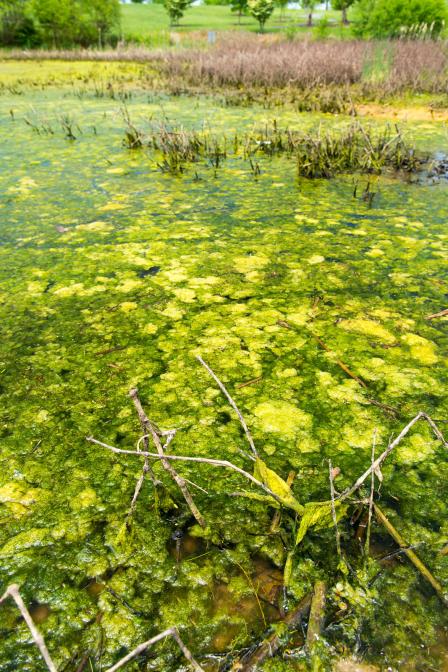Indicators: Phosphorus
What is phosphorus?
Phosphorus, like nitrogen, is a critical nutrient required for all life. The most common form of phosphorus used by biological organisms is phosphate (PO4), which plays major roles in the formation of DNA, cellular energy, and cell membranes (and plant cell walls). Phosphorus is a common ingredient in commercial fertilizers.

Why is it important to evaluate phosphorus?
High concentrations of phosphorus may result from poor agricultural practices, runoff from urban areas and lawns, leaking septic systems or discharges from sewage treatment plants. Too much phosphorus can cause increased growth of algae and large aquatic plants, which can result in decreased levels of dissolved oxygen– a process called eutrophication. High levels of phosphorus can also lead to algae blooms that produce algal toxins which can be harmful to human and animal health.
What can phosphorus tell us about the condition of water?
Phosphorus is usually considered the “limiting nutrient” in aquatic ecosystems, meaning that the available quantity of this nutrient controls the pace at which algae and aquatic plants are produced. In appropriate quantities, phosphorus can be used by vegetation and soil microbes for normal growth. However, in excess quantities, phosphorus can lead to water quality problems such as eutrophication and harmful algal growth. Some aquatic resources, such as wetlands, naturally serve as sinks for phosphorus found in sediments or dissolved in water. However, since phosphorus generally occurs in small quantities in the natural environment, even small increases can negatively affect water quality and biological condition.
